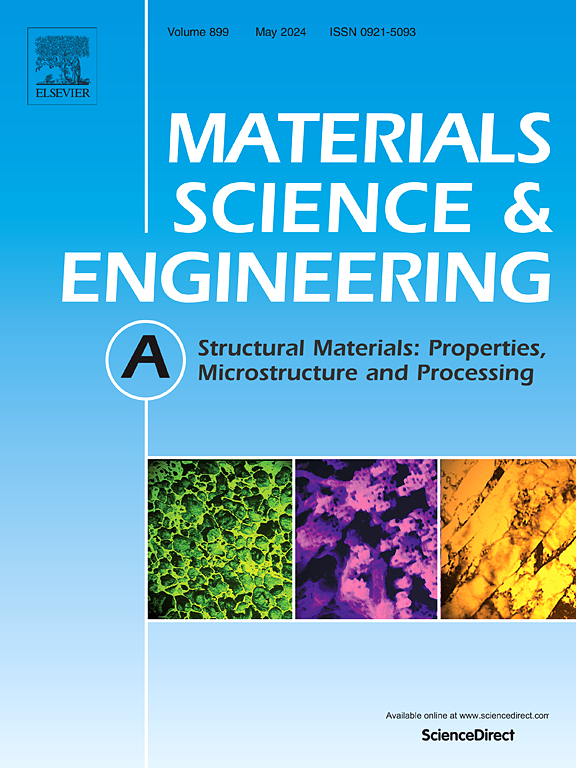Explainable machine learning for predicting tensile properties of aluminum alloys in the laser powder bed fusion process
IF 6.1
2区 材料科学
Q1 MATERIALS SCIENCE, MULTIDISCIPLINARY
引用次数: 0
Abstract
The rapid solidification and unique thermal gradients inherent to the laser powder bed fusion of metals (PBF-LB/M) process limit the suitability of conventional aluminum (Al) alloys, necessitating the optimization of existing alloys or the development of new compositions to achieve the desired tensile properties while ensuring good processability. Experimental exploration of alloy compositions is labor-intensive, costly, and time-consuming. Machine learning (ML) offers a cost-effective, flexible approach to streamline alloy design and accelerate advancements in AM technologies. This study introduces a data-driven predictive framework for predicting tensile properties of Al alloys for PBF-LB/M. To address the limited data on LPBF of Al alloys and the restricted range of alloy systems investigated, data of conventional Al alloys (including cast and wrought alloys) and laser-directed energy deposition (DED-LB/M) built Al alloys were also included, alongside PBF-LB/M data. The dataset incorporates a comprehensive pool of features such as alloy composition, processing parameters, grain size, and elemental properties. The Pearson correlation coefficient (PCC) with feature importance-based feature selection was implemented to balance model complexity and accuracy via reducing the dimensionality and overfitting. The resulting ML framework demonstrates excellent predictive accuracy and generalizability, successfully extending its applicability to unseen alloy systems. This framework offers a reliable tool for optimizing Al alloy designs, significantly reducing reliance on costly experimental trials. The inclusion of Explainable AI provided detailed interpretability, elucidating the influence of individual features on model predictions, ensuring the predictions were scientifically grounded.
可解释的机器学习预测铝合金在激光粉末床熔合过程中的拉伸性能
激光粉末床熔融金属(PBF-LB/M)工艺固有的快速凝固和独特的热梯度限制了传统铝(Al)合金的适用性,需要对现有合金进行优化或开发新的成分,以实现所需的拉伸性能,同时确保良好的加工性能。合金成分的实验探索是劳动密集型的、昂贵的和耗时的。机器学习(ML)为简化合金设计和加速增材制造技术的进步提供了一种经济高效、灵活的方法。本研究介绍了一种数据驱动的预测框架,用于预测PBF-LB/M铝合金的拉伸性能。为了解决铝合金LPBF数据有限以及所研究合金体系范围有限的问题,除了PBF-LB/M数据外,还包括了传统铝合金(包括铸造和锻造合金)和激光定向能沉积(ed - lb /M)铝合金的数据。该数据集包含了一个全面的特征池,如合金成分、加工参数、晶粒尺寸和元素属性。采用基于特征重要性的Pearson相关系数(PCC)方法,通过降维和过拟合来平衡模型的复杂性和准确性。由此产生的机器学习框架证明了出色的预测准确性和泛化性,成功地将其适用性扩展到未知的合金系统。该框架为优化铝合金设计提供了可靠的工具,大大减少了对昂贵的实验试验的依赖。可解释的人工智能提供了详细的可解释性,阐明了个体特征对模型预测的影响,确保预测是有科学依据的。
本文章由计算机程序翻译,如有差异,请以英文原文为准。
求助全文
约1分钟内获得全文
求助全文
来源期刊

Materials Science and Engineering: A
工程技术-材料科学:综合
CiteScore
11.50
自引率
15.60%
发文量
1811
审稿时长
31 days
期刊介绍:
Materials Science and Engineering A provides an international medium for the publication of theoretical and experimental studies related to the load-bearing capacity of materials as influenced by their basic properties, processing history, microstructure and operating environment. Appropriate submissions to Materials Science and Engineering A should include scientific and/or engineering factors which affect the microstructure - strength relationships of materials and report the changes to mechanical behavior.
 求助内容:
求助内容: 应助结果提醒方式:
应助结果提醒方式:


